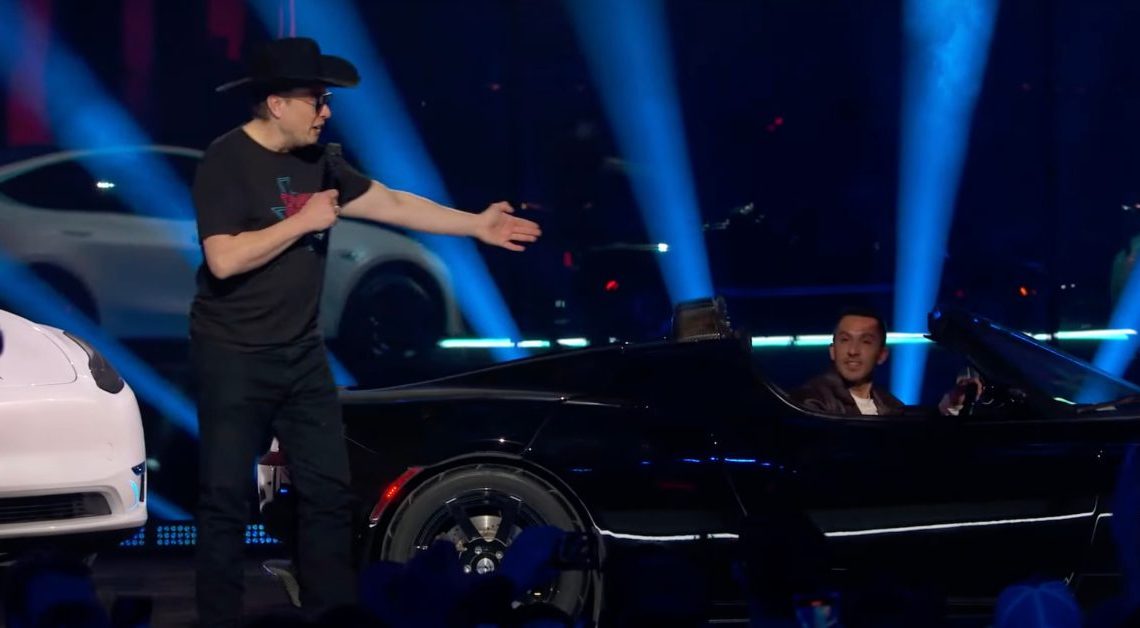
Elon Musk is back referencing his ‘Tesla Secret Master Plan Part 2’. Let’s take a look at how the execution is going 8 years later.
As a sort of public business plan, Musk has been releasing ‘Tesla Secret Plan’ blog posts to describe the automaker’s product plans.
The first was released back in 2006 and to Tesla’s credit, the company accomplished pretty much everything in that plan.
In 2016, Musk released ‘Tesla Secret Master Plan Part 2‘.
Musk republished it this weekend. It has been 8 years, how is it going?
Integrate Energy Generation and Storage
The first point/product in the plan was “a smoothly integrated and beautiful solar-roof-with-battery product”:
Create a smoothly integrated and beautiful solar-roof-with-battery product that just works, empowering the individual as their own utility, and then scale that throughout the world. One ordering experience, one installation, one service contact, one phone app.
This was at a time Musk was trying to sell the merger of Tesla with SolarCity.
Tesla did build the solar roof, but it hasn’t been the success it thought it would be—at least for now.
At one point, Tesla talked about producing 1,000 solar roofs per week. Tesla never released specific data about the solar roof rollout, but we obtained some data at some point showing that the company had installed only a small fraction of that.
Tesla’s overall solar deployment, which also includes rooftop solar, has been falling over the last year as Tesla focuses on supplying its energy ecosystem to third-party installers.
Expand to Cover the Major Forms of Terrestrial Transport
The second point is about having EV models in all segments of transportation:
Today, Tesla addresses two relatively small segments of premium sedans and SUVs. With the Model 3, a future compact SUV and a new kind of pickup truck, we plan to address most of the consumer market. A lower cost vehicle than the Model 3 is unlikely to be necessary, because of the third part of the plan described below.
“A future compact SUV”. Tesla launched Model Y which became the best-selling vehicle in the world last year – an incredible feat.
“A new kind of pickup truck”. Tesla launched the Cybertruck recently – to mixed reviews, but it is still early in the rollout and certainly too early to say if the program is going to be a success or failure.
As for a cheaper vehicle than Model 3 being “unlikely to be necessary,” that was plain wrong. Tesla badly needs cheaper vehicles, and recently, It has invested in its next-generation vehicle platform, which is expected to support a “$25,000 car.” Although, a recent report claimed that Tesla canceled the program, which Musk denied.
Along with these vehicles, the “Master Plan Part 2” mentioned two commercial electric vehicles:
In addition to consumer vehicles, there are two other types of electric vehicle needed: heavy-duty trucks and high passenger-density urban transport. Both are in the early stages of development at Tesla and should be ready for unveiling next year. We believe the Tesla Semi will deliver a substantial reduction in the cost of cargo transport, while increasing safety and making it really fun to operate.
Tesla Semis are on the road today, but the program has also had its issues. It was delayed several years and to this day, Tesla only deployed a few electric trucks to its own fleet and a single client, PepsiCo.
The program has not been a success yet, but Tesla is not giving up on it. The automaker is currently building an expansion at its Gigafactory in Nevada to build the electric in high volume.
As for the “high passenger-density urban transport”, Tesla has never publicly commented on it 8 years later, but a video allegedly of a Tesla prototype for a people-mover for The Boring Company did leak last year.
Develop a self-driving capability that is 10X safer than manual via massive fleet learning
The last two points, autonomy and sharing, are linked together and dependant on Tesla developing self-driving technology.
This has obviously yet to happen.
Musk has often made predictions about Tesla delivering self-driving and they were all wrong. In that blog post, Musk was way more careful about talking about a timeline:
As the technology matures, all Tesla vehicles will have the hardware necessary to be fully self-driving with fail-operational capability, meaning that any given system in the car could break and your car will still drive itself safely. It is important to emphasize that refinement and validation of the software will take much longer than putting in place the cameras, radar, sonar and computing hardware.
The hardware has changed a lot over the last 8 years, and the “refinement and validation” are still ongoing.
With the recent release of FSD v12, there has been hope that Tesla could finally deliver on its promise, but there’s still significant doubt.
As for the sharing part, it is completely dependent on Tesla achieving self-driving.
What Tesla has accomplished since is truly incredible.
As for the second part, the fact that the Model Y came out of it is amazing by itself.
However, there was a clear emphasis on autonomy in the plan and that hasn’t been going as well. To be fair, it’s an incredibly difficult problem to solve. But there’s an argument to be made about Tesla’s putting too many eggs in the same basket on that front.
Author: Fred Lambert
Source: Electrek




I credit Elon’s first master plan blog post for greatly influencing my interest in electric vehicles.